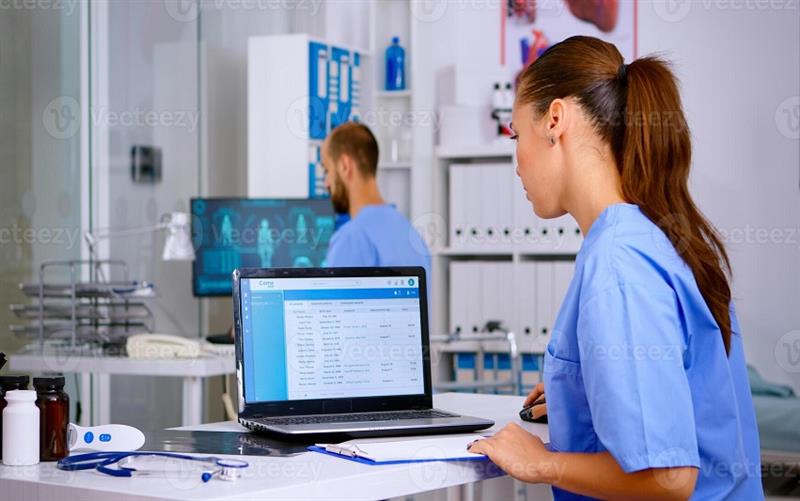
In 2024, selecting the best hospital software will be crucial since it will affect patient care, overall success, and hospital efficiency. You can make sure your hospital chooses a solution that fits its specific needs and paves the way for future growth by concentrating on important features like interoperability, telehealth capabilities, AI integration, and data security, as well as by adhering to best practices like conducting a needs assessment, evaluating vendors, and making implementation plans.
In 2024, the healthcare industry will still be undergoing fast change, with technology being essential to improving patient care, optimizing processes, and guaranteeing regulatory compliance. Choosing the appropriate hospital software is more important than ever because it has a direct impact on productivity, patient outcomes, and the standard of care provided. This blog will walk you through the most important characteristics to search for in hospital software as well as the best practices to adhere to while choosing.
Hospital Software's Crucial Features for 2024:
1. Interoperability and Integration
- Seamless Communication: The software ought to facilitate the easy sharing of data between various departments, outside systems, and healthcare providers. This makes sure that patient data is always current and available, which improves the coordination of care.
2. Artificial Intelligence and Machine Learning
- Predictive analytics: It refers to the use of artificial intelligence (AI) to analyze large volumes of data in order to forecast patient outcomes, maximize staffing, and spot any health hazards before they become serious.
- Automation: Routine tasks can be automated by machine learning algorithms.
3. Compliance and Data Security
- HIPAA Compliance: Verify that the program complies with HIPAA (Health Insurance Portability and Accountability Act) requirements, shielding patient information from security lapses and unapproved access.
- Advanced Encryption: To protect sensitive data while it's in transit and at rest, look for software that uses strong encryption techniques.
4. Patient Engagement Tools
- Patient Portals: By giving patients access to their medical records, making appointments, and exchanging information with their healthcare professionals, a comprehensive patient portal promotes a more involved and knowledgeable patient base.
- Mobile Access: Thanks to software that is optimized for mobile devices, patients and staff may obtain critical information while on the road, guaranteeing ongoing care and communication.
5. Scalability
- Growth-Oriented Design: The program must be expandable to meet the hospital's needs when it grows in terms of patient load, extra services offered, or number of sites. By doing this, you can be sure that the software will grow with your facility and safeguard your investment in the future.
6. Telehealth Proficiencies
- Virtual Consultations: Hospital software should provide virtual consultations, which let patients communicate with medical professionals at a distance, in light of the expanding demand for telemedicine.
- Remote monitoring: Especially for the management of chronic diseases and post-operative care, the capacity to keep an eye on patients' health problems from a distance via wearable technology and smartphone apps is an essential aspect.
The Best Ways to Choose Hospital Software
1. Make a Needs Assessment
- Stakeholder Input: Consult with important parties, such as medical professionals, nurses, office personnel, and IT specialists, to learn about their requirements and problems. This guarantees that the software chosen satisfies each user's unique needs.
- Sort characteristics according to importance, from must-haves to nice-to-haves. This makes the choices more manageable and concentrates on solutions that support the objectives of your hospital.
2. Assessing the Vendor's Image
- Select suppliers who have a track record of success in the healthcare sector. A vendor with knowledge of hospital software will have a greater understanding of the particular difficulties and legal requirements.
- Customer Testimonials: Seek for comments and endorsements from other medical facilities that have used the program. This gives information about the software's effectiveness in real-world scenarios and user satisfaction.
3. Ask for trials and demos.
- Practical Testing: Ask for a software demo or trial before deciding. This enables your team to test the features, interact with the interface, and find any possible problems.
- User Input: During the testing stage, get input from users. Their opinions are really helpful in figuring out how well-suited and user-friendly the product is for them.
4. Evaluate Training and Support
- Vendor Support: Verify that the supplier provides comprehensive support services, such as troubleshooting, software updates, and technical help. Fast problem solving and reduced downtime depend on dependable support.
- Training Programs: To ensure a seamless transition, extensive training programs are necessary. To assist employees in becoming familiar with the new software, the vendor ought to offer workshops and training materials.
5. Take Ownership Total Cost (TCO) into Account.
- Upfront and Hidden Costs: Consider the entire cost of ownership, which includes the price of the first purchase, installation charges, maintenance costs going forward, and training. Recognize any unstated expenses that might affect your spending plan.
- ROI, or return on investment, Think about the software's long-term advantages in terms of increased productivity, patient happiness, and compliance. A sizable long-term savings could justify a higher initial investment.
6. Strategy for Execution
- Phased Rollout: To reduce disturbance and allow for modifications, roll out the software gradually. Staff can also get acclimated to the system gradually before it goes live over the entire hospital.
- Monitoring and Assessment: After the software is implemented, keep an eye on its functionality at all times. Periodic assessments aid in pinpointing opportunities for enhancement and guarantee that the software persists in fulfilling the hospital's requirements.